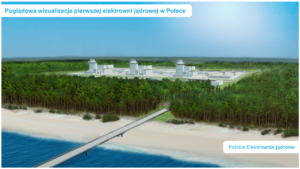PGNiG strengthens its position in the small-scale LNG market, with almost 18% more liquefied gas dispatched by the Company from Świnoujście last year than in 2017.
A vast majority of the LNG imported by PGNiG to Poland is regasified in the Świnoujście terminal and injected into the gas network. But the volumes of gas delivered to end users in the form of liquefied natural gas (small-scale LNG) are on the rise. With this method natural gas can be supplied to customers with no access to the countrywide network of pipelines. Last year 1,794 LNG tank trucks filled with LNG left the Świnoujście terminal, compared to 1,523 in 2017. Since the mid-2016, when the LNG terminal became operational, a total of 4,000 tank trucks were loaded with LNG by PGNiG.
Most of the LNG sold by PGNiG comes from the Świnoujście terminal, where it is delivered by ships from Qatar, Norway and the USA. The other source of supply of the Polish small-scale LNG market is the Company’s own liquefaction facilities in Odolanów and Grodzisk Wielkopolski. According to the estimates, PGNiG holds an almost 70% share in the small-scale LNG market in Poland. The remaining part of the market is supplied by other entities importing this fuel by tank trucks.
“Growing sales of liquefied natural gas are a consequence of the growing share of LNG in PGNiG’s import portfolio. The primary cause, however, is a rapid increase in demand for natural gas in liquefied form,” said Maciej Woźniak, Vice President of the PGNIG SA Management Board for Trade. “Our customers appreciate the highest quality and security of deliveries of the product offered by PGNiG”.
The largest end users of LNG are local gas grids, which operate wherever there is no access to countrywide network of pipelines. Those grids usually supply a single town or industrial facility. Delivery of LNG and its subsequent regasification (i.e. heating) on site is a very effective way to supply companies and households, due to the fact that natural gas in liquefied form has 600 times smaller volume than in volatile form. For example, a regasified load of a single LNG tank truck is sufficient to supply 194 households for a year if gas is used only to prepare meals. Or it can provide heating of a single-family house for almost 11 years.
The food industry is another major customer for LNG. For example, dairies or fruit and vegetable processing plants use the gas in technological processes and for energy purposes. Another important customer is the hotel industry.
The sectors with the fastest growing interest in LNG in the coming years are small CHPs and transport, as LNG can be used as an environmentally friendly fuel for buses, trucks and ships. Thus, the development of the small-scale LNG market in Poland may significantly contribute to the improvement of air quality in the country.
PGNiG








